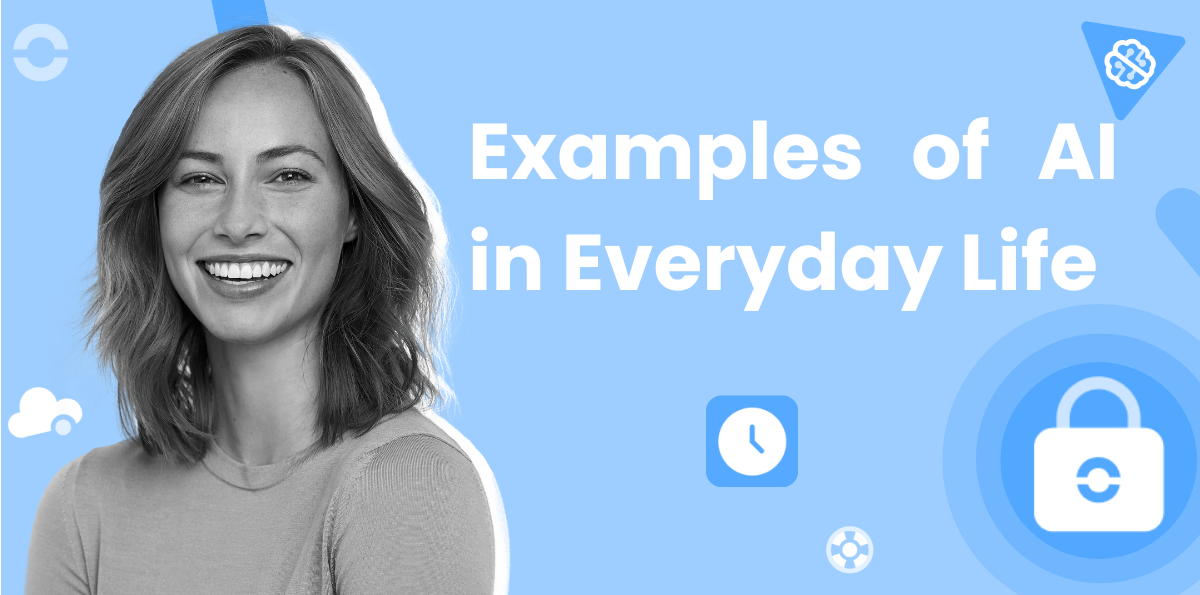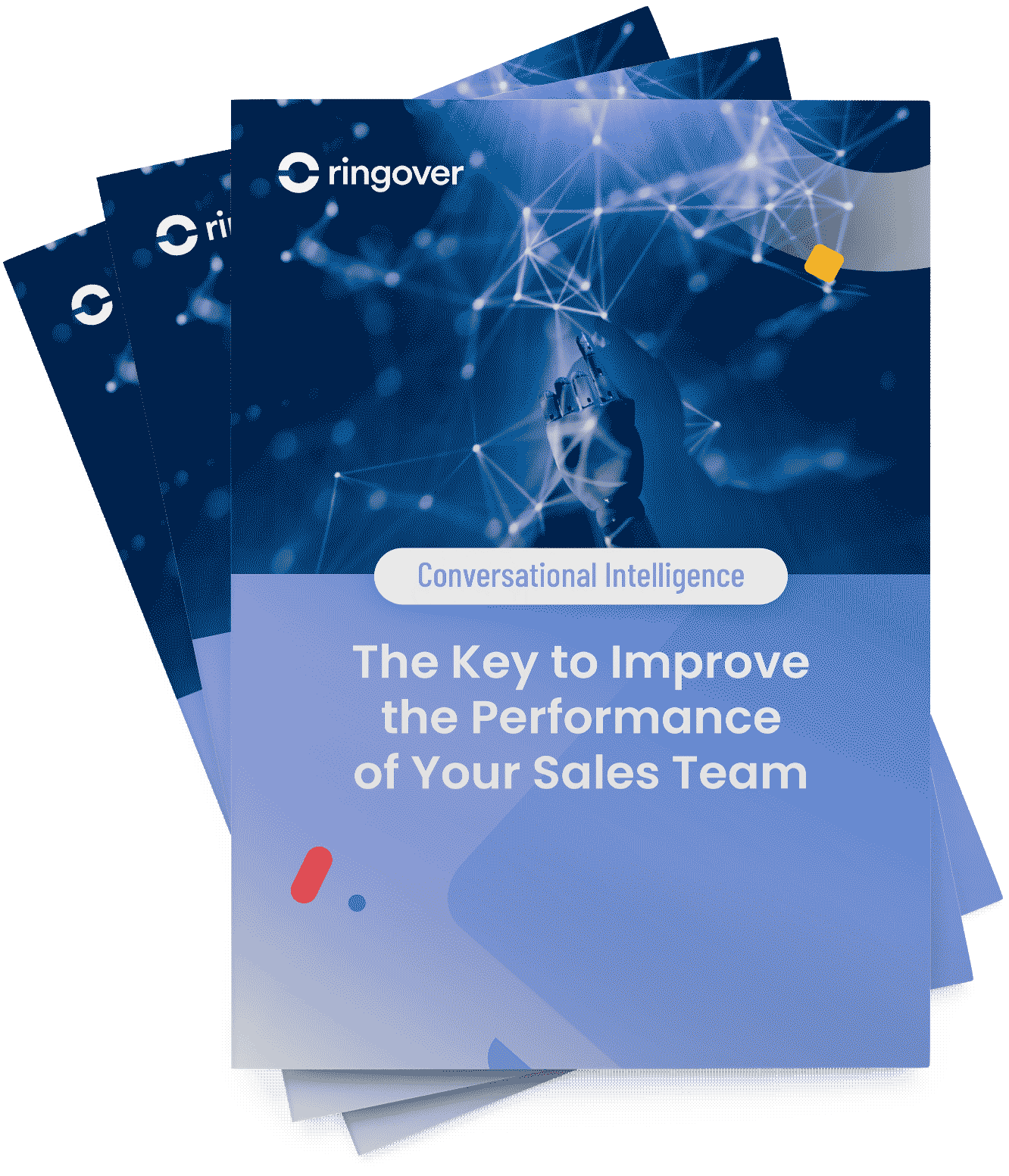Summary
- Examples of AI in Everyday Life
- GPT Models
- Voice Assistants
- AI Chatbots for E-Commerce and Customer Support
- Video Creation
- Facial Recognition
- Web Search
- Real-Time GPS Navigation
- Fraud Detection (Insurance, Banking, etc.)
- Content Recommendations on Social Media
- Conversational Analysis
- Marketing Automation
- Smart Home Technology (Domotics)
- Autonomous Vehicles
- Predictive Medicine and Personalised Treatments
- Weather Forecasting
- Leverage AI Today
Artificial intelligence has quickly woven itself into the fabric of our everyday routines—often without us even realising it—and is now having a tangible impact on how we live, work, and consume.
Both the general public and professionals can benefit from AI in many ways. Today, anyone can leverage these technologies to boost efficiency, sharpen strategies, or simply streamline time-consuming tasks.
But the key is knowing where AI can truly make a difference—and how to integrate it without overcomplicating existing processes. So, what are the different use cases?
Examples of AI in Everyday Life
| # | AI Example | Brief Description |
|---|---|---|
| 1 | GPT Models | Generate text, summarise, translate, plan, code, and more. |
| 2 | Voice Assistants | Understand spoken requests and adapt to user context. |
| 3 | AI Chatbots | Help customers 24/7, recommend products, schedule appointments, etc. |
| 4 | Video Creation | Produce professional videos with avatars and AI-generated voices in just a few clicks. |
| 5 | Facial Recognition | Identify faces to secure or authenticate access. |
| 6 | AI-Powered Web Search | Summarise and directly answer queries using AI (e.g., AI Overviews). |
| 7 | Real-Time GPS Navigation | Predict and adjust routes based on traffic and incidents. |
| 8 | Fraud Detection | Analyse behaviour patterns to spot anomalies or fraudulent activity. |
| 9 | Content Recommendations | Personalise content feeds based on preferences and user interactions. |
| 10 | Conversational Analysis | Transcribe and analyse conversations to extract insights. |
| 11 | Marketing Automation | Personalise and optimise campaigns based on user behaviour. |
| 12 | Smart Home Automation | Manage your home and devices based on habits and context. |
| 13 | Autonomous Vehicles | Make real-time decisions using onboard AI. |
| 14 | AI in Medicine | Assist with diagnostics, image analysis, patient monitoring, etc. |
| 15 | Weather Forecasting | Analyse massive datasets to predict weather events. |
GPT Models
Can we even talk about AI today without mentioning generative language models like ChatGPT and its competitors? These tools represent a major leap forward in AI—both for the general public and for professionals. They've completely changed the way we interact with artificial intelligence, with applications ranging from content creation and analysis to translation and summarisation.
ChatGPT, for example—OpenAI's solution—can be integrated into various tools and platforms, making it easy to use across many sectors. It can be used to write code, summarise information, plan projects, and more.
Also read: 10 ChatGPT prompt examples for customer service
These GPT models are continually improving through regular updates, which add new features and enhance their performance.
Voice Assistants
Whether it's Alexa, Siri, or Google Assistant, these voice assistants are built on advances in natural language processing (NLP). It's not just about interpreting a string of words—this is intelligent listening, adapted to each user's context and habits.
Their use of cloud technology makes them practically ubiquitous: whether at home, on the go, or in the office, all it takes is a connection to get the same level of responsiveness. And their integration into connected devices unlocks a whole range of uses that go far beyond smart home control.
What sets today's voice assistants apart is their ability to evolve with their users. Thanks to what's often called "contextual intelligence", they tailor their responses not just based on what you say, but also on what you're experiencing. That's a significant difference.
AI Chatbots for E-Commerce and Customer Support
AI chatbots are gradually becoming part of daily life, especially when it comes to online shopping or support.
Their main role is to improve the user experience, boost sales, and optimise processes for sales and support teams.
One of the most striking examples is Rufus, Amazon's shopping assistant, which helps users find detailed product information, analyse reviews, and get personalised recommendations.
However, you don't need to be a tech giant to offer such a tool to your customers. For example, you can use Ringover's AI assistant, customising it with your own data. The possibilities are vast—context-aware and relevant answers, 24/7 availability, purchase assistance, appointment booking, and more.
Video Creation
In just a few years, video production has shed many of its technical constraints. What used to require meticulous expertise—often limited to specialists—is now accessible to a whole new group: communications professionals, sales teams, customer service, or even individual project owners.
The year 2025 marks a turning point in this evolution. More intuitive tools are emerging, harnessing the full power of generative AI. There's no longer a need for complex software suites or editing skills—some platforms now generate sleek, professional-looking videos in just minutes, where it once required time, budget, and expertise.
One leading example is Synthesia, a go-to solution for businesses seeking agility. Its concept? Synthetic avatars that can deliver speeches, present services, or walk through tutorials—always with professional, coherent results. It's become a compelling alternative to traditional formats, especially for internal training, product demos, and customer communications.
Another innovation to watch is Veo 3, developed by Google. Still in early adoption stages, this technology is part of the Gemini ecosystem and is gaining traction in fields like content marketing and digital influence.
Some creators are already using it to craft short narratives or experiment with more dynamic visual storytelling—an approach that could pave the way for new hybrid uses, blending spontaneity with algorithmic precision.
Facial Recognition
Once confined to highly selective security systems, facial recognition has now become part of everyday tech. By 2025, its usage has extended far beyond surveillance and access control.
It's found in smartphones and some banking apps—and who knows, it might soon be common in public spaces too...
At the heart of this technology are computer vision algorithms that map facial features, extract precise reference points, and compare them to a database to identify or authenticate individuals.
This nearly instant process analyses hundreds of invisible parameters—distance between eyes, jaw curvature, bone structure, etc.—making every face as unique as a fingerprint.
Web Search
The way we access information online is undergoing a quiet yet profound transformation. With platforms like Perplexity, ChatGPT, Gemini, and Copilot, web search is no longer just about keywords and links—it's becoming conversational.
Google's introduction of AI Overviews signals a new kind of interaction: more contextual, more adaptive.
AI Overviews is a feature that automatically summarises search results, offering an AI-generated answer at the top of the page.
It uses the Gemini model to scan multiple sources, extract relevant information, and provide a clear summary. This AI answer often appears before traditional links and may include lists, tips, or explanations.
While it doesn't always show its sources directly, these can still be accessed through associated links. The system tailors its responses to the context of the query, including rephrased versions.
Real-Time GPS Navigation
GPS navigation has never been more effective. Where earlier systems simply provided directions, today's AI-powered solutions learn, anticipate, and adapt. Google Maps, Waze, and others no longer just guide you—they interpret road conditions in real time.
By analysing a flood of shared data—average speeds, reported accidents, weather conditions, and traffic density—algorithms dynamically recalculate routes, offer alternatives, and alert users to delays or potential hazards.
On certain routes, the precision is so high that a detour of just a few hundred meters might be suggested to save two minutes. That may seem trivial for individual users, but it can make a huge difference for transport professionals and emergency services.
Fraud Detection (Insurance, Banking, etc.)
In banking and insurance, AI is redefining how fraud is detected. By analysing user behaviour, transaction anomalies, and technical signals in real time, AI can now spot malicious activity with unprecedented accuracy. In the age of deepfakes and AI-generated scams, institutions are arming themselves with tools to detect these new threats.
However, technology alone isn't enough. It's the combination of powerful algorithms, human oversight, and strict procedures that truly strengthens system resilience.
That said, there's a major challenge: ensuring these tools remain ethical and transparent—especially when fraudsters themselves play by no rules.
Content Recommendations on Social Media
Behind every suggested post on social media lies a well-oiled machine. AI drives what users see, read, or scroll through—constantly refining the feed based on interactions, connections, content types, timing, and context.
In 2025, the focus is on short, engaging formats that grab attention in seconds. In theory, algorithms "reward" content perceived as authentic, useful, or conversation-worthy. But in the AI era, what does true authenticity even mean?
Regardless, for brands, the challenge is twofold: to understand these dynamics, and to use AI to create tailored content. From predictive analytics to format suggestions, AI has become a full-fledged editorial partner.
Conversational Analysis
Until recently, the rich insights hidden in phone or video conversations with clients were often underused. Now, AI-driven conversational intelligence unlocks those insights—without the need to manually listen to every call.
Tools like Empower by Ringover transcribe, structure, and analyse conversations. The goal? Not just to understand what's being said, but to uncover what it really means.
For example, in sales:
- What objections come up most frequently?
- What messaging is most effective during a closing?
- Why do some agents perform better than others in similar situations?
Previously buried in hours of conversation, these answers are now available in just a few clicks.
Beyond words, AI can detect tone, intensity, and hesitation. It reveals trends, highlights areas for improvement, feeds scripts, and helps standardise best practices.
This marks a shift from intuition-based decision-making to a data-driven approach, informed directly by field insights.
Marketing Automation
AI is transforming automated marketing into a refined, predictive engine. In 2025, automation tools no longer simply execute sequences—they anticipate behaviour, personalise messaging at scale, and adjust campaigns in real time.
Every interaction—clicks, purchases, email opens, or social engagement—feeds models that enhance customer understanding. The goal is more accurate personalisation, better-qualified leads, and campaigns delivered at the right moment on the right channel.
This improves how resources are allocated between marketing and sales. Thanks to smart lead scoring and behavioural analysis, sales teams can focus on high-potential prospects.
Smart Home Technology (Domotics)
Smart home technology is changing how we relate to our living spaces. By centralising control of lighting, heating, shutters, and security, it turns homes into intelligent environments capable of anticipating needs and responding automatically to context.
These systems still rely on the traditional trio—sensors, a central controller, and triggers. However, artificial intelligence is radically changing how these components interact. AI analyses home data (temperature, lighting, schedules, routines) to automatically adjust the environment based on context and habits, with no manual input required.
For example, a smart thermostat no longer just follows a schedule: it anticipates your movements, detects weather changes, and adjusts heating to maximise comfort while reducing energy use. The same applies to lighting, shutters, and security—AI considers dozens of factors to optimise every action.
Autonomous Vehicles
The spectacular progress in mobility over recent years is largely thanks to AI, which lies at the heart of how these systems operate. Far from being just an evolution of the automobile, autonomous vehicles represent a full reinvention of driving, safety, and traffic management.
An autonomous vehicle relies on a mix of sensors (lidars, radars, cameras), onboard processing units, and, most importantly, AI algorithms that understand the environment in real time, predict the behaviour of other road users, and make instant decisions.
At every moment, AI interprets thousands of data points to assess the situation—vehicle positions, traffic lights, pedestrians, weather conditions, and more. It can brake, change lanes, or anticipate hazards far faster than a human driver.
Predictive Medicine and Personalised Treatments
Predictive medicine and personalised treatments, powered by artificial intelligence, are reshaping healthcare.
AI can analyse vast amounts of medical data to detect diseases early—often before symptoms appear—especially through medical imaging.
It also evaluates biomarkers to anticipate individual risk and adapt preventive care accordingly.
By tailoring treatments to genetic profiles and medical history, AI enhances effectiveness while reducing side effects.
Weather Forecasting
As you've probably noticed, weather forecasts in France are often criticised—conflicting reports, unexpected heavy rain, poorly calibrated alerts. These shortcomings expose the limits of traditional forecasting models.
AI offers a new approach. Specialised models trained on billions of data points (from satellites, radars, ground stations) allow weather changes to be analysed with unprecedented speed and precision.
These tools don't replace human forecasters but assist them effectively, especially in predicting extreme weather events. As weather data becomes more accessible, forecast reliability is expected to improve significantly in the coming years.
Leverage AI Today
As technological innovation accelerates, one constant stands out: artificial intelligence is becoming a strategic lever for performance, efficiency, and competitive differentiation.
At Ringover, we've placed this conviction at the core of our solutions. Your teams can use AI to increase sales, boost operational responsiveness, improve customer experience, and much more.
For forward-looking businesses, adopting accessible AI is no longer optional—it's a competitive edge. Want expert guidance to ensure a successful transformation? Connect with our specialists today!
Published on July 2, 2025.



